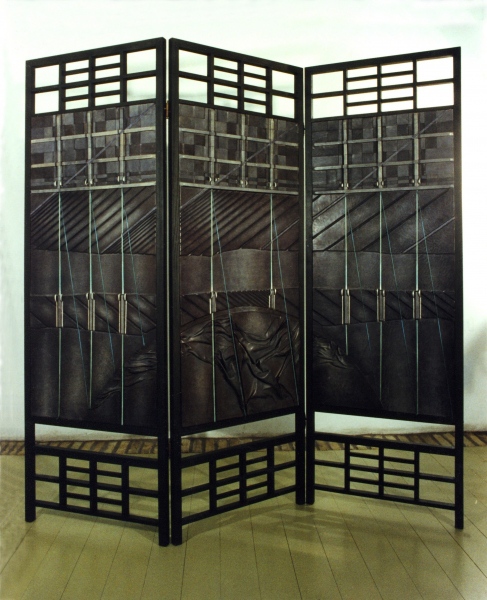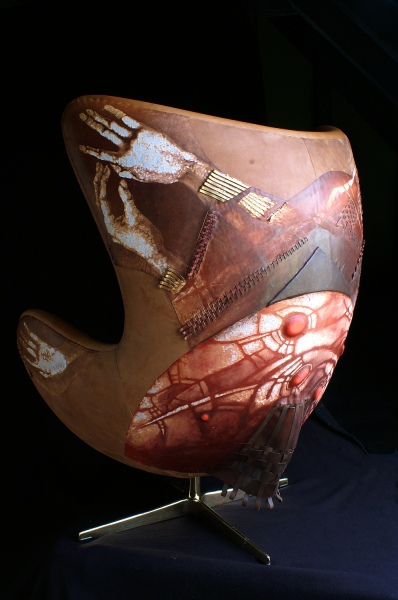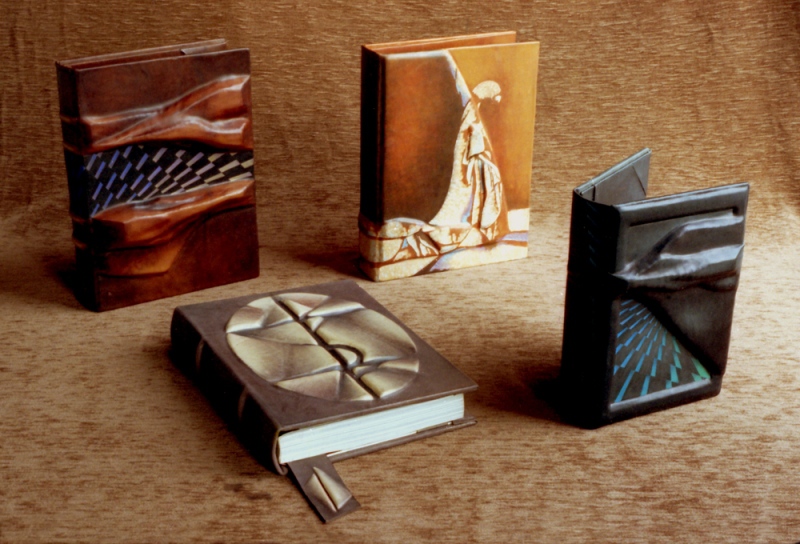I am fully aware that my work is not easily categorized. Perhaps it can be best described, in general, as “design in leather”. Using this material I combine various forms, both linear and three-dimensional, into works of art.
In my search for the forms to use in my art, I find that a particular kind of emotional attitude is necessary, and a manner of thought which is inspired by two main sources: archaic folk art and mythology.
Although I live in the present, I experience these “archaic” forms not as outmoded or irrelevant; on the contrary, to me they seem “modern” in design. The designs I use are inextricably linked to the land and people of my own heritage. The Baltic peoples have a long tradition of creating meaningful, plastic forms which have a functional presence in everyday life.
Mythology is important, because it attempts, in a symbolic manner, to provide answers to the basic problems of man’s existence. In my art, I especially refer to both the fairy tale and the Bible.
In general I utilize the forms in my work in a more abstract way than in a figurative one. A certain amount of stabiity and deliberation is therefore more important than the expression of the moment; static forms contribute to this manner of working. This also explains why I prefer to use leather. The material has an intrinsic beauty of its own, but is also relatively difficult to work with.in a “spontaneous” manner. One cannot quickly or randomly form it into a static three-dimensional design. Thus the material exerts a certain “control” over my creative process and prevents an overly “casual” or provisional expression in my art. With leather this is not possible.
LEATHER, OLD OR NEW?
Leather is one of the oldest materials used worldwide by mankind. From the beginning of civilization up to the present day, the skins of animals have been used for all kinds of articles, from clothing, water containers and belts to shoes, handbags and luggage. And, also from the start of its use, leather has always been decorated, and used in an artistic way. One classic combination is that of leather and wood, for instance in the design of furniture through the ages, but also in the context of musical instruments. Processed into “parchment”, (after the city of Pergamon in Asia Minor), extremely thin leather could thus be used to write upon.. And naturally the stack of “skins” could be bundled in a covering of leather, the first book bindings.
Even today, centuries-old folios in museums, for instance, bear witness to the lasting beauty of decorative work on leather, where precious metals are often combined with the leather basis. Through this intensive and many-faceted use, the technology of leather developed far and wide, in numerous variations around the world. The process, from the difficult preparation up to the final artistic expression, is extremely intensive, and seems perhaps not in step with these modern times. But for me, this is precisely the reason to create new and unique works of art using this exquisite material.


